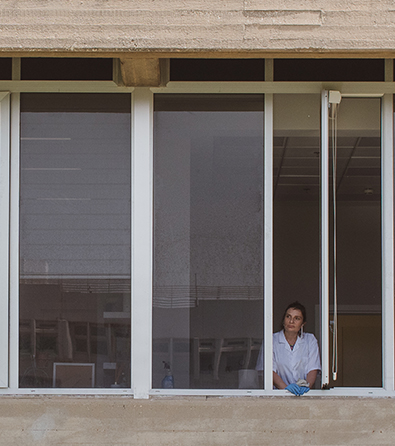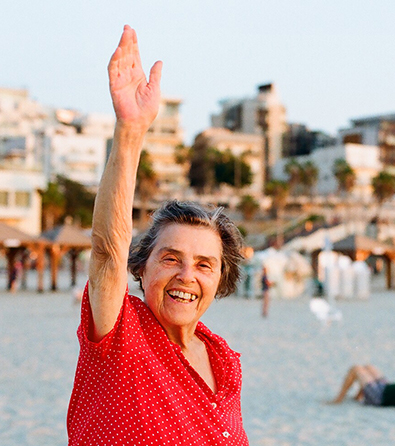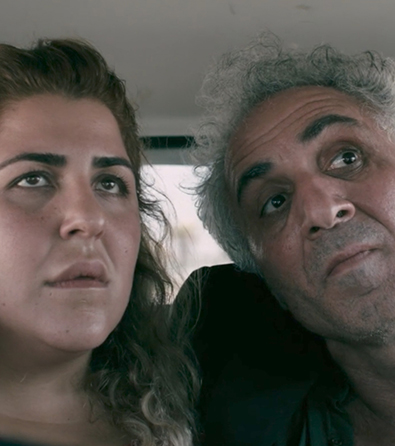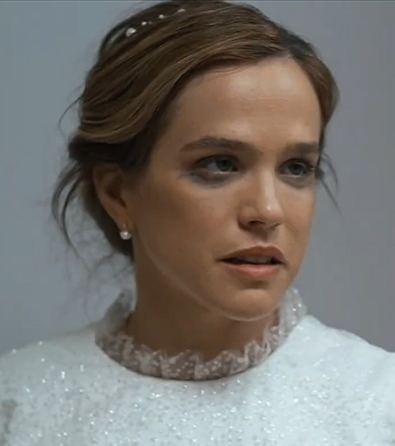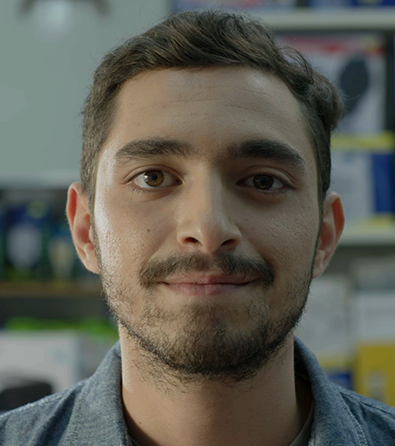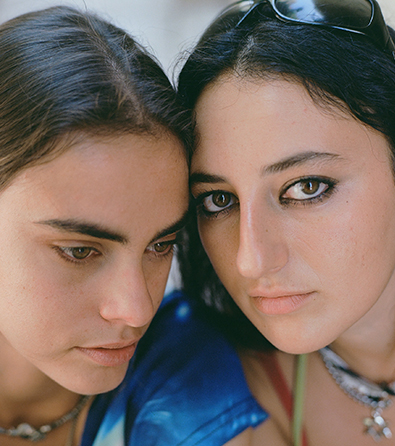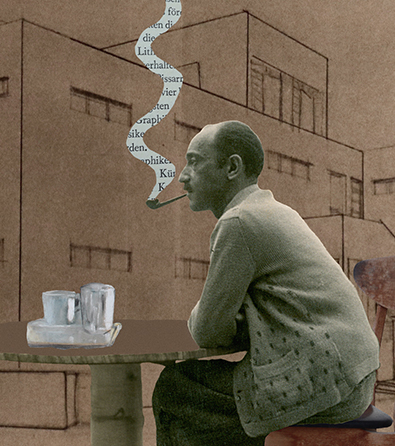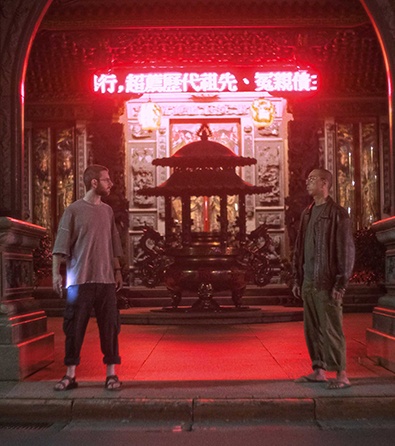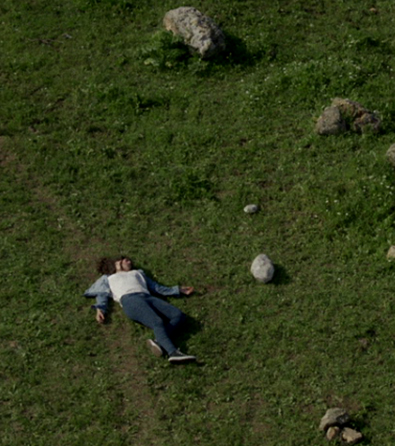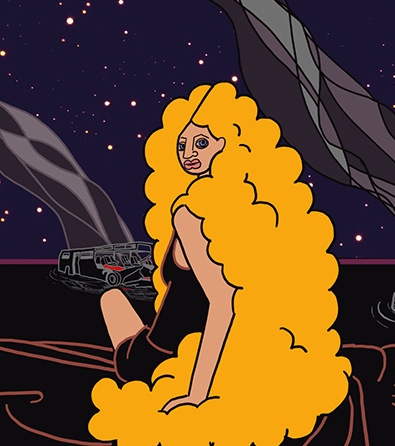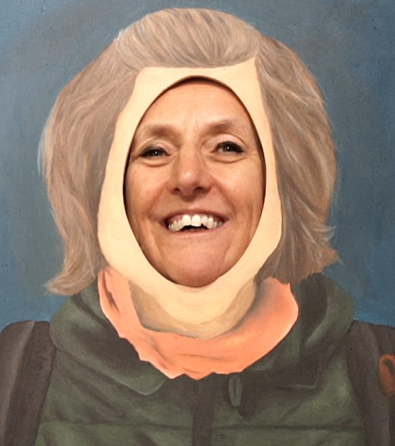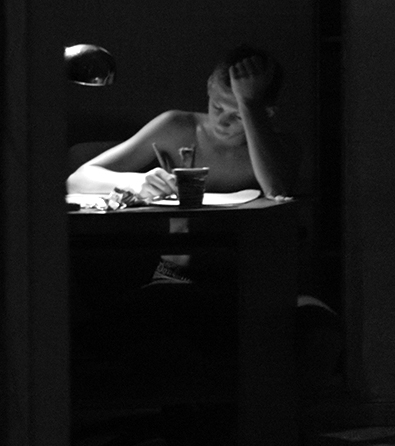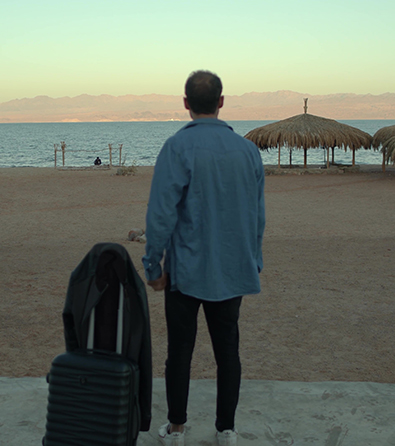Watch the short animation film Tamou (10:30 minutes) at the top of the page.
* To watch this film, please approve YouTube/Vimeo cookies via the blue cookie icon at the bottom left of the screen
In the short animated film Tamou (featured at the top of the page), directors Tzor Edery and Tom Prezman offer a piercing look at identity within the patriarchal Moroccan society. The film, which premiered at the Cinefondation competition at the Cannes Festival in 2020, brings to the screen themes of gender, sexuality, and self-discovery. Its cinematography is influenced by early 20th-century German Expressionism: geometric shapes, backgrounds, character outlines, and the use of textures and expressive lighting with a stark contrast between darkness and light. The German Expressionist films produced in Northern Europe at the beginning of the 20th century dealt with the depths of the human soul, emphasizing identity and sexual orientation, fears, and inner impulses, thus the thematic influence is also evident.
At the heart of Tamou is a Jewish transgender housewife in 20th-century Morocco, who confronts a conservative society that does not accept her. The unique script avoids didacticism and does not include events but rather associative scenes of battling the inner demons that awaken in the main character, Tamou, who examines her social and gender-related belonging. The film opens with a figure walking through the streets while many eyes observe it. The society’s gaze on the character’s body is threatening, intimidating, and characterized by voyeurism and staring. Subsequently, the character is led to a wedding canopy to the sound of applause and cheers, dressed in a bridal gown, with a veil covering her face. Hands reach under the veil, touching her face. Above her lips, male mustache hairs are removed to give her a more feminine appearance.
The editing style of Tamou is associative, blending various techniques of animation and visual art: illustration, vintage prints, photo albums, and family archive photographs. This editing lends the film a personal touch, for instance, by presenting documentary moments from the main character’s life against the backdrop of the Jewish community in Morocco, where she lives. This approach, alongside the design technique, endows the film with collage-like characteristics that place objects in multiple dimensions within the frame: some are two-dimensional, while others appear in their realistic form as objects in still photography, giving the object a three-dimensional visual representation. For example, when the main character is doing laundry, her illustrated hand rubs the clothes on a washboard represented by a photograph of the object that has undergone graphic treatment. The concrete photography of objects and the undefined, unbounded line drawing strengthen the narrative and construct the social environment in which Tamou lives. The diverse and complex editing techniques match the rich inner world of the main character, who lives amidst many conflicts and between different identities.
As Tamou performs household chores like dishwashing or laundry in her daily routine, a dark male figure chases her and enters her clothes. Tamou feels ashamed as her body is exposed, her hidden identity is revealed, and no one accepts her as she is. The dark man represents Tamou’s parallel identity, the identity she left behind, and the antagonist threatening her existence.
Her character, as an inner demon, draws inspiration from German Expressionist films and Hitchcock’s work. In these films, the main character often has multiple faces and genders, and the supporting characters represent opposing sides of her personality, identity, and sexual orientation. Thus, in one of the scenes in Tamou, the main character strikes a man harassing her, revealing a strength identified with her masculine side. The clothes Tamou washes in the film function as a metonymy for the masculine identity she left behind. When she hangs the laundry, she looks at a man’s suit flapping without a body wearing it. Yet, this identity chases her even when she puts the suit in the closet, and then mustache hairs grow above her lips. Tamou becomes a man sitting in a bar, observed by everyone; he cannot enter and be accepted in the company of men, torn between worlds, genders, and territories.
Edery and Prezman’s engagement with Morocco provokes thought on additional identities discussed in the margins of the film – Jewish and Moroccan identities. After gaining independence in 1956, Moroccan cinema spent several decades reviving the representation of women. Parallel to the rise of women’s rights movements in the country in the 1980s, several films by female directors were produced. For example, “A Door to the Sky” (1988) by Farida Benlyazid marked a breakthrough in women’s cinema and challenged traditional gender roles. In the film, a young Franco-Moroccan woman named Nadia returns to Fez after years in France to see her dying father. She embarks on a journey of self-transformation, and with the help of a new friend, Nadia decides to turn her family home into a “Zaouia” – a Sufi spiritual home for women and a site for exploring collective interpretations focusing on women in Islam. The spacious house with its designed geometric walls becomes a backdrop for sisterhood among women of different backgrounds and the melodramatic romantic relationships between them, expressed in daily life practices, singing, dancing, and conversation. The film questions a singular cultural and gender identity by exploring the intersection of feminism and Muslim spirituality from a transnational perspective.
Contemporary Moroccan cinema, influenced by a diverse cultural and ideological background, represents a bold gender dynamic. Female directors who studied cinema in France create unique narratives that deviate from traditional patriarchal representations. These filmmakers, originating from Algeria, Morocco, and Tunisia, navigate complex social and cultural landscapes. In the Moroccan context, directors use cinematic language to create spaces for diverse readings and interpretations of gender issues. For example, Maryam Touzani’s “The Blue Caftan” (2022) tells the story of Mina and Halim, who run a traditional caftan shop in one of Morocco’s old quarters. The couple hires Youssef to help with the work to meet customer demands. Youssef, dedicated and eager to learn the craft of sewing from Halim, quickly Mina discovers how enchanted her husband is with the young man. Like in Tamou, here too, the garment functions as a metonymy for the missing identity within the relationship; the two men in love with each other are engaged in designing and sewing a caftan intended for women.
Anchoring Tamou‘s narrative in the cinematic and geographical territory of Morocco represents a journey of identity search in a place that frequently examines religious, communal, and gender boundaries.
Tamou was produced as an undergraduate final project at the Department of Screen-Based Arts, Bezalel Academy of Arts and Design, in 2019.
The short animation film Tamou is available to watch at the top of the page.
